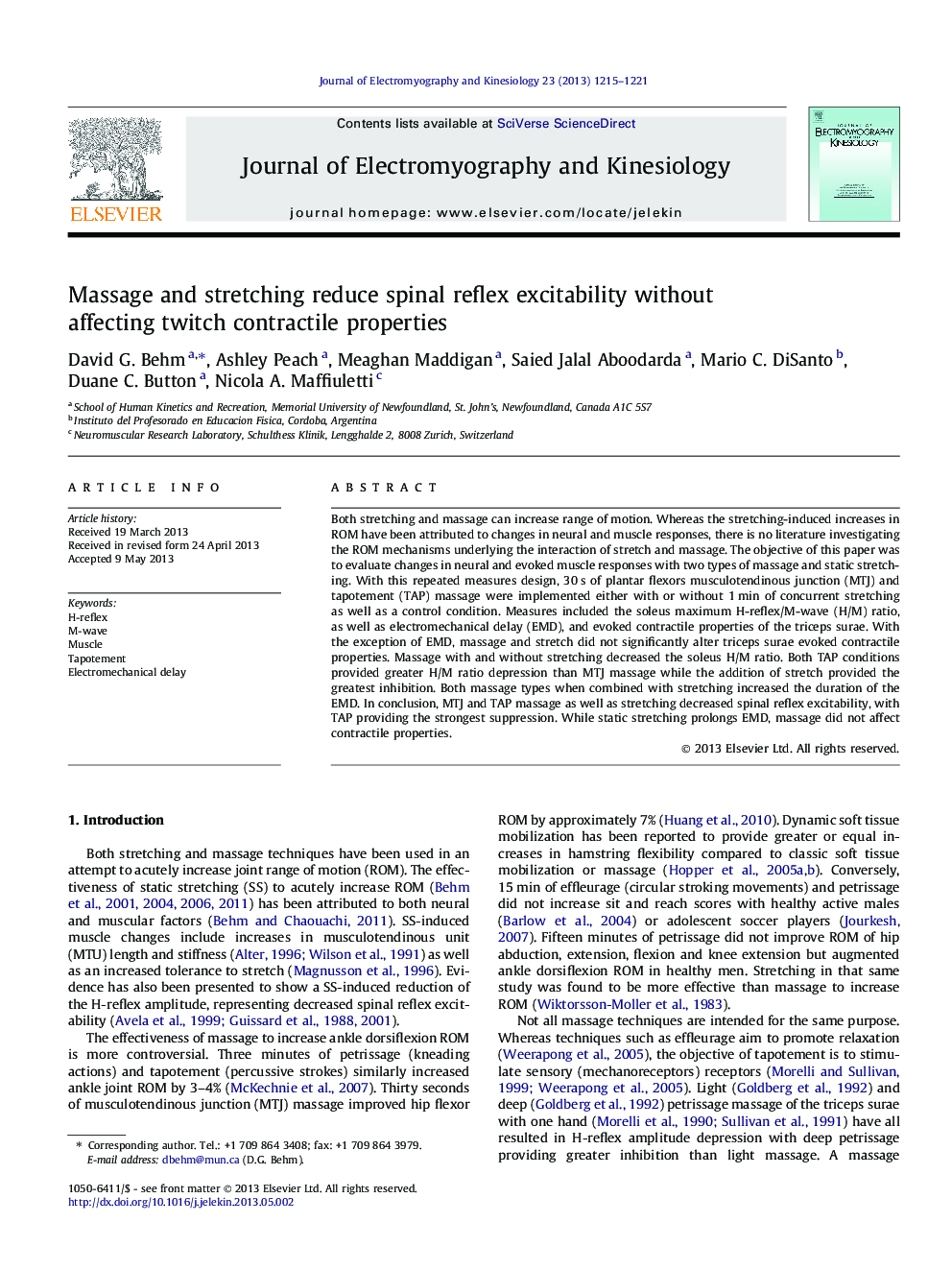| Article ID | Journal | Published Year | Pages | File Type |
|---|---|---|---|---|
| 6210570 | Journal of Electromyography and Kinesiology | 2013 | 7 Pages |
Both stretching and massage can increase range of motion. Whereas the stretching-induced increases in ROM have been attributed to changes in neural and muscle responses, there is no literature investigating the ROM mechanisms underlying the interaction of stretch and massage. The objective of this paper was to evaluate changes in neural and evoked muscle responses with two types of massage and static stretching. With this repeated measures design, 30Â s of plantar flexors musculotendinous junction (MTJ) and tapotement (TAP) massage were implemented either with or without 1Â min of concurrent stretching as well as a control condition. Measures included the soleus maximum H-reflex/M-wave (H/M) ratio, as well as electromechanical delay (EMD), and evoked contractile properties of the triceps surae. With the exception of EMD, massage and stretch did not significantly alter triceps surae evoked contractile properties. Massage with and without stretching decreased the soleus H/M ratio. Both TAP conditions provided greater H/M ratio depression than MTJ massage while the addition of stretch provided the greatest inhibition. Both massage types when combined with stretching increased the duration of the EMD. In conclusion, MTJ and TAP massage as well as stretching decreased spinal reflex excitability, with TAP providing the strongest suppression. While static stretching prolongs EMD, massage did not affect contractile properties.
